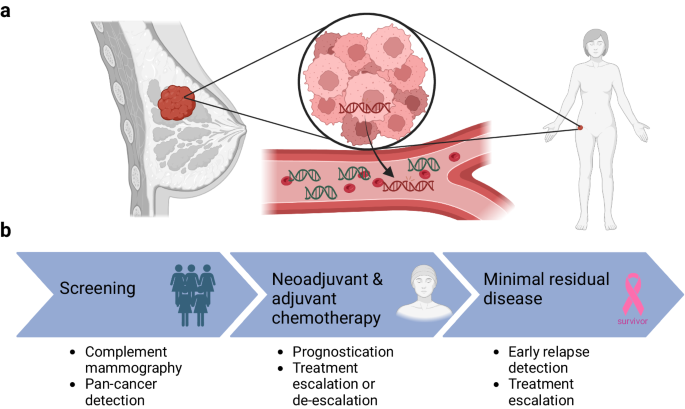ctDNA Monitoring in Breast Cancer Treatment: Early Signs and ...
Mridula George, MD, discussed a study investigating ctDNA monitoring during neoadjuvant therapy of breast cancer. Tumor cells being attacked - Generated with Google Gemini AICirculating tumor DNA (ctDNA) is emerging as a valuable tool across many cancer types. One study (NCT05333874) sought to investigate the potential of ctDNA testing to track treatment response in breast cancer patients receiving neoadjuvant therapy.
ctDNA Testing in Breast Cancer Patients
In the study, ctDNA was detectable in most patients with both triple-negative and HER2-positive breast cancer. Higher pretreatment ctDNA levels were associated with larger tumors and more advanced stages. Patients who cleared ctDNA within 6 weeks of neoadjuvant treatment were more likely to have a good surgical outcome. Postsurgical ctDNA positivity was more common in patients with higher pretreatment levels or advanced stage disease. In some cases, it even identified hidden metastases not detected by imaging.
Implications of ctDNA Monitoring
Additionally, for 2 patients, ctDNA testing led to changes in treatment. The findings of this study suggest that ctDNA monitoring during neoadjuvant therapy can be a valuable tool for early assessment of treatment response and guiding postsurgical treatment decisions.
Interview Insights
In an interview, Mridula George, MD, breast medical oncologist, discussed the study, its implications, and the next steps in research for ctDNA in breast cancer. 
Unmet Needs in Breast Cancer
George highlighted the importance of identifying patients at increased risk of relapse using circulating tumor DNA.
Study Investigation
The study evaluated the role of circulating tumor DNA in patients with stage II and stage III triple-negative breast cancer and HER2-positive breast cancers.
Key Findings
Thirty patients were monitored, with detectable circulating tumor DNA levels showing implications for patient outcomes, especially in cases of relapse with metastatic disease. 
Implications for Clinicians
The study findings suggest that higher levels of detectable ctDNA may increase the risk of relapse in breast cancer patients.
Using ctDNA for Prediction
Circulating tumor DNA can predict or identify patients at higher risk of relapse, providing a lead time of about 9 months depending on the breast cancer subtype.
Future Research Goals
Research aims to determine optimal drug targets using ctDNA and personalized treatment approaches for different subtypes of breast cancer. 
For more information on breast cancer treatment and research, explore the related articles below:
- Hormone-Modulating Therapy for Breast Cancer Appears Protective Against Dementia
- Unpacking the New Recommendations for Early-Stage Breast Cancer Management
- Leon-Ferre Explores Targeting of PIK3CA Alterations in ER+ Breast Cancer
- Breast Cancer Leans into the Decade of Antibody-Drug Conjugates, Experts Discuss
- Dato-DXd Shows Promise as a More Tolerable ADC in HER2-Negative mBC
- Elacestrant/Abemaciclib for ER+, HER2- Breast Cancer: Promising Early Results
For inquiries and appointments, contact:
2 Commerce Drive
Cranbury, NJ 08512
609-716-7777




















